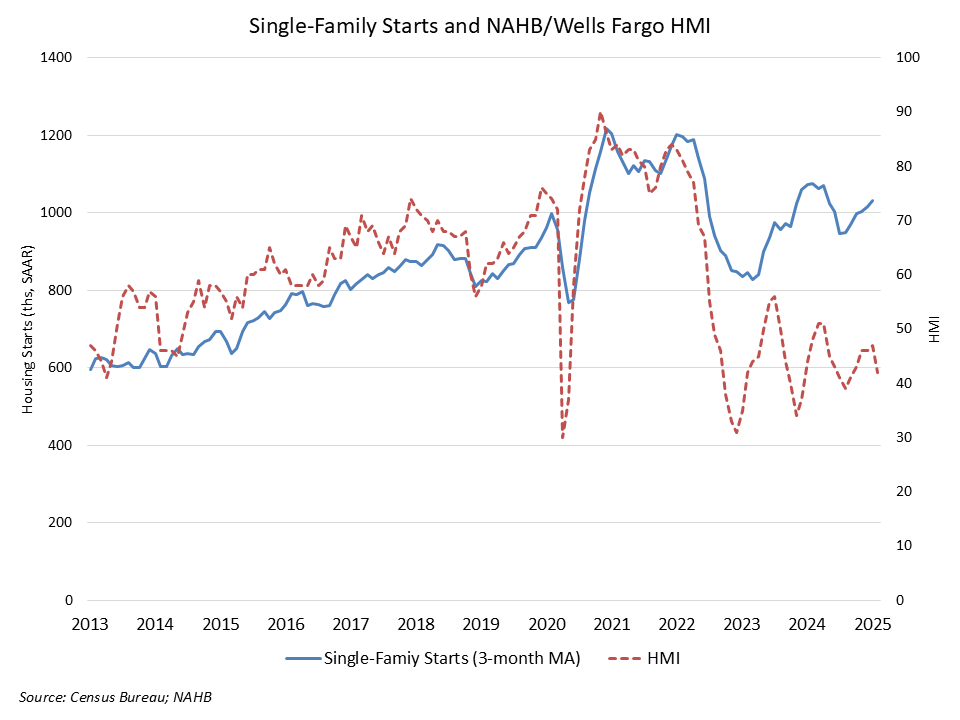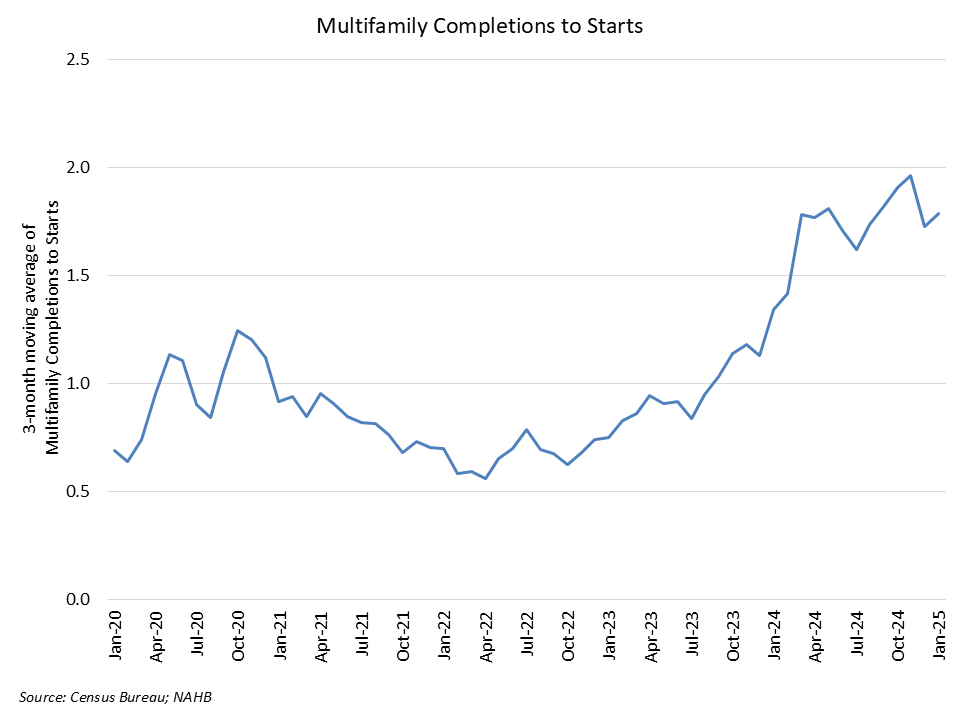
U.S. Housing Starts Decline Amid Economic Challenges in Early 2025
U.S. Housing Starts Decline Amid Economic Challenges in Early 2025
In January 2025, the U.S. housing market experienced a notable downturn, with housing starts decreasing by 9.8% to a seasonally adjusted annual rate of 1.366 million units. This decline reflects the ongoing challenges posed by elevated mortgage rates, increased construction costs due to tariffs, and adverse weather conditions.
Single-Family and Multifamily Housing Starts
The single-family housing sector saw an 8.4% reduction, bringing the annual rate down to 993,000 units. This marks a 1.8% decrease compared to January 2024, indicating a persistent slowdown in this segment.

The multifamily sector, encompassing apartment buildings and condominiums, experienced a more pronounced decline of 13.5%, adjusting to an annualized rate of 373,000 units. This downturn in multifamily construction suggests a cautious approach by developers in response to current market uncertainties.

Regional Variations in Housing Starts
Regionally, the impact varied significantly:
Northeast: Experienced a substantial decrease of 27.6% in combined single-family and multifamily starts.
Midwest: Faced a 10.4% reduction in housing starts.
South: Saw a notable decline of 23.3%.
West: Contrarily, reported a significant increase of 42.3%, primarily driven by a surge in multifamily housing projects.
These regional disparities highlight the localized nature of housing market dynamics, influenced by factors such as weather conditions, economic activities, and demographic trends.
Building Permits and Future Construction Outlook
Building permits, a leading indicator of future construction activity, remained relatively stable with a slight increase of 0.1%, reaching a 1.483 million unit annualized rate in January. Single-family permits held steady at 996,000 units, while multifamily permits experienced a marginal rise of 0.2%, totaling an annualized 487,000 units. The stagnation in permit issuance suggests a cautious outlook among builders, likely due to economic uncertainties and cost pressures.
Factors Influencing the Housing Market
Several key factors have contributed to the current state of the housing market:
Elevated Mortgage Rates: The average 30-year fixed-rate mortgage remains high, starting February 2025 at 6.89%. This elevation continues to impact affordability and dampen buyer enthusiasm. Ramsey Solutions
Increased Construction Costs: The implementation of tariffs, particularly on steel and aluminum, has escalated building material costs. This surge in expenses has led to higher overall construction costs, affecting both builders and potential homeowners. Investopedia
Adverse Weather Conditions: Severe weather, including snowstorms and freezing temperatures in January, has disrupted construction activities, especially in the Midwest and Northeast regions. These conditions have contributed to the decline in housing starts. Reuters
Market Outlook and Builder Sentiment
The National Association of Home Builders (NAHB)/Wells Fargo Housing Market Index (HMI) reflects a decline in builder confidence, dropping five points to 42 in January. This decrease is attributed to concerns over rising construction costs, elevated mortgage rates, and overall housing affordability challenges. Builders are approaching the market with increased caution, balancing the need to manage costs with the demand for new housing. MarketWatch
Policy Considerations and Recommendations
To address these challenges, policymakers are encouraged to consider measures aimed at reducing regulatory burdens and construction costs. Streamlining permitting processes, revising zoning laws, and exploring incentives for affordable housing development could enhance housing supply and affordability. Additionally, reassessing trade policies that impact material costs may alleviate some financial pressures on builders, potentially revitalizing the housing market.
Conclusion
The early months of 2025 have presented significant challenges for the U.S. housing market, characterized by declining housing starts, regional disparities, and economic headwinds. Addressing these issues requires a multifaceted approach, involving policy interventions, industry adaptations, and a keen awareness of evolving market dynamics. Stakeholders across the housing sector must collaborate to navigate this complex landscape and work towards a more stable and affordable housing environment.